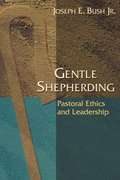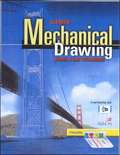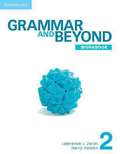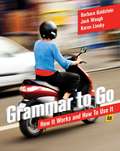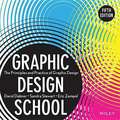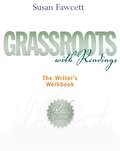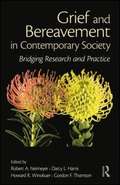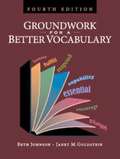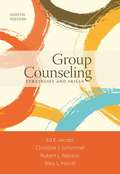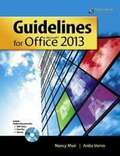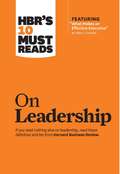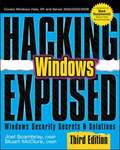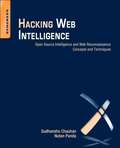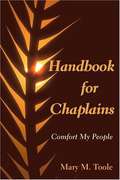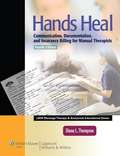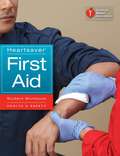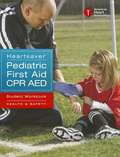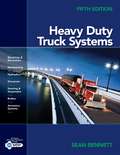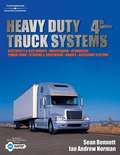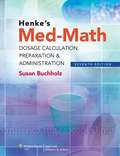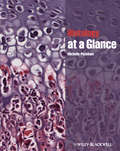- Table View
- List View
General Chemistry
by Bruce Averill Patricia EldredgeThe overall goal of the authors with General Chemistry: Principles, Patterns, and Applications was to produce a text that introduces the students to the relevance and excitement of chemistry. Although much of first-year chemistry is taught as a service course, Bruce and Patricia feel there is no reason that the intrinsic excitement and potential of chemistry cannot be the focal point of the text and the course. So, they emphasize the positive aspects of chemistry and its relationship to students' lives, which requires bringing in applications early and often. In addition, the authors feel that many first year chemistry students have an enthusiasm for biologically and medically relevant topics, so they use an integrated approach in their text that includes explicit discussions of biological and environmental applications of chemistry. Topics relevant to materials science are also introduced to meet the more specific needs of engineering students.
Gentle Shepherding: Pastoral Ethics and Leadership
by Joseph E. Bush Jr.Gentle Shepherding offers a rare balance in an introduction to pastoral ethics, one that identifies deeply with the pastoral vocation and brings it into conversation with a developed body of ethical theory.
Glencoe Mechanical Drawing: Board and CAD Techniques
by Glencoe McGraw-Hill StaffProject-based learning prepares students for professional certification with Glencoe Mechanical Drawing: Board and CAD Techniques! Endorsed by the American Design Drafting Association (ADDA), this text includes Prep for ADDA activities. Step-by-step applications, design problems, and drafting problems prepare students for professional excellence and certification. Project-based learning is supported with unit-based projects that integrate technical math and culminate in Build Your Portfolio activities. Help your students get ready for competitive events like the TSA and SkillsUSA with prep activities embedded throughout the content and end-of-chapter assessments. Rigorous academic content is supported, with a special emphasis on math, geometry, and science, with STEM activities. Point-of-use correlations ease possible academic credit application. Extra activities in the Student Edition and workbook help you meet Perkins mandates. The appendix features Math (including algebra and geometry), abbreviations and symbols, pipe symbols, and reference tables (ASME, ANSI, ISO).
Grammar and Beyond: Level 2 Workbook
by Lawrence J. Zwier Harry HoldenStudents learn real-world language. Grammar and Beyond is based on extensive corpus research into the ways that grammar is used in the real world. The series takes this research base and focuses students' attention on the most relevant and accurate information. Students then immediately apply what they have learned in speaking and writing. While the series places special emphasis on grammar for writing, all four skills are covered thoroughly. As students prepare to write, they practice editing common mistakes-based on an extensive collection of student writing. Then, they apply the grammar directly in a writing task, making a clear connection between what they study and how they write.
Grammar to Go: How It Works and How to Use It (4th Edition)
by Barbara Goldstein Jack Waugh Karen LinskyA book that will help you learn English grammar in a fast and logical way, this edition offers students a unique focus on sentence diagramming that helps them visualize and understand how words connect and incorporates a wide range of new material to help students hone their skills including additional traditional practice sets, more integrated assignments, increased opportunities for writing practice, and expanded discussions of each chapter's content on the book specific website.
Graphic Design School (Fifth Edition)
by Sandra Stewart Eric Zempol David DabnerGraphic Design School allows students to develop core competencies while understanding how these fundamentals translate into new and evolving media. With examples from magazines, websites, books, and mobile devices, the Fifth Edition provides an overview of the visual communications profession, with a new focus on the intersection of design specialties. A brand-new section on web and interactivity covers topics such as web tools, coding requirements, information architecture, web design and layout, mobile device composition, app design, CMS, designing for social media, and SEO.
Grassroots With Readings: The Writer's Workbook (Tenth Edition)
by Susan FawcettUsing her unique M-A-P approach (Model-Analysis-Practice), Susan Fawcett's books have guided hundreds of thousands of students through the writing process, from foundations of grammar, mechanics, and spelling, through writing clear sentences and well-organized paragraphs. Her inductive approach; plentiful, high-interest student models and practices; and contemporary readings engage and motivate students. This edition of GRASSROOTS features improved grammar coverage and emphasizes proofreading, with a new Chapter 6 that teaches specific proofreading strategies and shows students how to recognize their personal "error patterns," track, and correct them. Every subsequent chapter offers a proofing strategy for the concept being taught. Full-color illustrations, including 45 photos, cartoons, and artworks, plus a new design, help students visualize and understand key concepts.
Great Expectations: Study Guide
by Nancy TuneLiterature based study guides for secondary students and adult students. Each study guide includes teacher's notes and 35 project sheets.
Grief and Bereavement in Contemporary Society: Bridging Research and Practice
by Darcy L. Harris Howard R. Winokuer Robert A. Neimeyer Gordon F. ThorntonGrief and Bereavement in Contemporary Society is an authoritative guide to the study of and work with major themes in bereavement. Its chapters synthesize the best of research-based conceptualization and clinical wisdom across 30 of the most important topics in the field. The volume s contributors come from around the world, and their work reflects a level of cultural awareness of the diversity and universality of bereavement and its challenges that has rarely been approximated by other volumes. This is a readable, engaging, and comprehensive book that will share the most important scientific and applied work on the contemporary scene with a broad international audience, and as such, it will be an essential addition to anyone with a serious interest in death, dying, and bereavement. "
Groundwork for a Better Vocabulary
by Janet M. Goldstein Beth JohnsonBuilding a better vocabulary will help you gain confidence in reading, writing, speaking and thinking. This textbook is particularly useful for people learning English as a second language.
Group Counseling: Strategies and Skills (Eighth Edition)
by Ed E. Jacobs Robert L. L. Masson Riley L. Harvill Christine J. SchimmelGROUP COUNSELING: STRATEGIES AND SKILLS, Eighth Edition, provides an in-depth look at group counseling with an emphasis on practical knowledge and techniques for effective group leadership. The authors discuss the many facets of group counseling and provide examples of how each skill can be applied in a wide range of group settings to produce effective and efficient group sessions. The book's active approach focuses on the skills necessary for starting and ending a session, as well as on how to make the middle phase productive and meaningful. Through its integration of traditional theories and concepts of group process with thoughtful strategies and specific skills, this reader-friendly book meets the needs of practicing or future counselors, social workers, psychologists, and others who are leading or preparing to lead groups in a variety of settings.
Guidelines for Microsoft Office 2013 (Second Edition)
by Anita VernoIn this second edition, Guidelines for Microsoft® Office 2013, we apply those basics to the newest version of the Office suite. As in the first edition, you will find a step-by-step, visual approach that will help you quickly learn the key features of the Office applications, building knowledge in a logical and easy-to-follow way. For every skill, you will have the option of playing a Skills Video to see and hear the steps demonstrated on screen. Structured end-of-chapter and end-of-module activities and projects will help reinforce what you have learned and assess how well you can apply your new skills to realistic work and school situations. As you work through the skills, exercises, and projects in each chapter, you will gain confidence and proficiency.
HBR's 10 Must Reads on Leadership
by Harvard Business ReviewThis text offers managers and professionals the fundamental information they need to stay competitive in a fast-moving world.
Hacking Exposed Windows: Microsoft Security Secrets and Solutions (Third Edition)
by Stuart Mcclure Joel ScambrayMeet the challenges of Windows security with the exclusive Hacking Exposed "attack-countermeasure" approach. Learn how real-world malicious hackers conduct reconnaissance of targets and then exploit common misconfigurations and software flaws on both clients and servers. See leading-edge exploitation techniques demonstrated, and learn how the latest countermeasures in Windows XP, Vista, and Server 2003/2008 can mitigate these attacks. Get practical advice based on the authors' and contributors' many years as security professionals hired to break into the world's largest IT infrastructures. Dramatically improve the security of Microsoft technology deployments of all sizes when you learn to: Establish business relevance and context for security by highlighting real-world risks Take a tour of the Windows security architecture from the hacker's perspective, exposing old and new vulnerabilities that can easily be avoided Understand how hackers use reconnaissance techniques such as footprinting, scanning, banner grabbing, DNS queries, and Google searches to locate vulnerable Windows systems Learn how information is extracted anonymously from Windows using simple NetBIOS, SMB, MSRPC, SNMP, and Active Directory enumeration techniques Prevent the latest remote network exploits such as password grinding via WMI and Terminal Server, passive Kerberos logon sniffing, rogue server/man-in-the-middle attacks, and cracking vulnerable services See up close how professional hackers reverse engineer and develop new Windows exploits Identify and eliminate rootkits, malware, and stealth software Fortify SQL Server against external and insider attacks Harden your clients and users against the latest e-mail phishing, spyware, adware, and Internet Explorer threats Deploy and configure the latest Windows security countermeasures, including BitLocker, Integrity Levels, User Account Control, the updated Windows Firewall, Group Policy, Vista Service Refactoring/Hardening, SafeSEH, GS, DEP, Patchguard, and Address Space Layout Randomizationion
Hacking Web Intelligence: Open Source Intelligence and Web Reconnaissance Concepts and Techniques
by Sudhanshu Chauhan Nutan Kumar PandaOpen source intelligence (OSINT) and web reconnaissance are rich topics for infosec professionals looking for the best ways to sift through the abundance of information widely available online. In many cases, the first stage of any security assessment-that is, reconnaissance-is not given enough attention by security professionals, hackers, and penetration testers. Often, the information openly present is as critical as the confidential data. Hacking Web Intelligence shows you how to dig into the Web and uncover the information many don't even know exists. The book takes a holistic approach that is not only about using tools to find information online but also how to link all the information and transform it into presentable and actionable intelligence. You will also learn how to secure your information online to prevent it being discovered by these reconnaissance methods. Hacking Web Intelligence is an in-depth technical reference covering the methods and techniques you need to unearth open source information from the Internet and utilize it for the purpose of targeted attack during a security assessment. This book will introduce you to many new and leading-edge reconnaissance, information gathering, and open source intelligence methods and techniques, including metadata extraction tools, advanced search engines, advanced browsers, power searching methods, online anonymity tools such as TOR and i2p, OSINT tools such as Maltego, Shodan, Creepy, SearchDiggity, Recon-ng, Social Network Analysis (SNA), Darkweb/Deepweb, data visualization, and much more. Provides a holistic approach to OSINT and Web recon, showing you how to fit all the data together into actionable intelligence Focuses on hands-on tools such as TOR, i2p, Maltego, Shodan, Creepy, SearchDiggity, Recon-ng, FOCA, EXIF, Metagoofil, MAT, and many more Covers key technical topics such as metadata searching, advanced browsers and power searching, online anonymity, Darkweb / Deepweb, Social Network Analysis (SNA), and how to manage, analyze, and visualize the data you gather Includes hands-on technical examples and case studies, as well as a Python chapter that shows you how to create your own information-gathering tools and modify existing APIs
Handbook for Chaplains
by Mary M. TooleThis book is a concise source of information on eight different faith traditions. For each tradition, there is a brief outline of the principle beliefs, something about birth, the diet regulations, sickness, dying/death, and appropriate prayers that could be said with patients.
Hands Heal: Communication, Documentation, and Insurance Billing For Manual Therapists
by Diana L. ThompsonHands Heal provides valuable guidance on taking client histories, setting functional goals, communicating with other health care and legal professionals, documenting outcomes, and billing insurance companies. This comprehensive resource for massage therapy students and practitioners also includes information on HIPAA, information on relevant CPT and ICD-9 codes, and offers a variety of sample forms that can be used in practice.
Hartman's Nursing Assistant Care: Long-Term Care
by Jetta Fuzy Susan Alyare Hedman Suzanne RymerA comprehensive nursing assistant training textbook which includes information on long-term care, multiple chapters on home health care, and material on subacute and acute care. In addition it includes in-depth information on resident and client rights with sidebars that teach ways to promote independence and prevent abuse and neglect; a discussion of culture change; infection prevention; anatomy and physiology with an emphasis on normal changes of aging; updated nutrition information on MyPyramid, special diets, and feeding techniques; current information on legal issues, such as HIPAA and the Patient Self-Determination Act; 7 chapters on home health care, including information on medications, safety, infection prevention, mothers & newborns, and meal planning and preparation; a chapter containing subacute and acute care information, including pre- and post-operative care, as well as mechanical ventilation, chest tubes, and artificial airways.
Hartman's Nursing Assistant Care: Long-term Care and Home Care (Second Edition)
by Hartman PublishingThe second edition of Hartman Publishing's most comprehensive nursing assistant training textbook includes information on long-term care, as well as multiple chapters on home health care, and some material on subacute and acute care. This edition of the textbook contains: - In-depth information on resident and client rights and special boxes throughout that teach ways to promote independence and prevent abuse and neglect - New information on person-centered care and culture change - Up-to-date, comprehensive material on infection prevention - Many new photos and more website resources - Material on anatomy and physiology with an emphasis on normal changes of aging and observing and reporting - Updated nutrition information on MyPlate, special diets, and feeding techniques - Current information on legal issues, such as HIPAA, the Patient Self-Determination Act, and the Elder Justice Act - 7 chapters on home health care, including information on medications, safety, infection prevention, mothers & newborns, and meal planning and preparation - 1 chapter containing subacute and acute care information, including pre- and post-operative care, as well as mechanical ventilation, chest tubes, and artificial airways - Chapter-ending material which develops critical thinking, as well as tests the chapter - Significantly expanded testing section available to instructors, including 31 chapters exams, two final exams, and a critical thinking exam, along with a practice exam for students taking the certification test - A table of procedures, common abbreviations list, a special appendix with a math review, and a glossary
Heartsaver First Aid: Student Workbook
by Louis Gonzales Michael W. Lynch Sue BorkThis course provides a framework for learning basic skills that may save a life or prevent further injury.
Heartsaver: Pediatric First Aid CPR AED (Student Workbook)
by The Editors at the American Heart AssociationThis course provides a framework for learning basic skills that may save a life or prevent further injury of an infant or child.
Heavy Duty Truck Systems
by Sean BennettHEAVY DUTY TRUCK SYSTEMS, 5th EDITION is a best-selling introduction to servicing medium-and heavy-duty trucks, providing a strong foundation of content on Electricity and Electronics, Power Train, Steering and Suspension, Brakes, and Accessories Systems. The fifth edition has been updated throughout including an introduction to Eaton DM clutches and comprehensive coverage of Caterpillar's new highway vocational transmission, updates of electricity and electronics to cover new battery technology, and coverage of new FMVSS 121 (2009) stopping distance for semi-combinations.
Heavy Duty Truck Systems (4th Edition)
by Sean Bennett Ian Andrew NormanThe 4th edition of this best-selling comprehensive introduction to servicing medium-heavy duty trucks has been significantly updated and expanded. Coverage added includes twelve new or expanded chapters, including a comprehensive introduction to electricity and electronics, the latest on electronic automatic transmissions, updated braking systems including ABS, and completely revised chapters on air-conditioning to make it compliant with today's standards. In addition to the revisions to the book, there is now a comprehensive support package including an all new workbook featuring numerous and practical job-sheets for lab activities.
Henke's Med-Math: Dosage Calculation, Preparation and Administration (Seventh Edition)
by Susan BuchholzThis best-selling text features a highly visual, hands-on approach to learning dosage calculations and principles of drug administration. It presents step-by-step approaches to solving problems and includes dosage problems that simulate actual clinical experience. Each chapter includes numerous examples, self-tests, and proficiency tests.
Histology at a Glance (At A Glance Ser. #50)
by Michelle PeckhamThis brand new title provides a highly illustrated and unambiguous introduction to the science, structure and function of cells, their related pathology, and in particular, helps readers master the basic principles of recognizing features of histological sections. Histology at a Glance: Presents the perfect combination of text and image; key concepts are explained and superbly illustrated Provides coverage of all the main body systems and the components of the tissues of these systems Features practical information on microscopy, including sample preparation and magnification Includes hints and tips to help recognize features in a histological specimen, and overcome common difficulties Contains self-assessment questions to help test learning and recognition Links to the author's histological website, which features many more tips and samples, at www. wiley. com/go/histologyataglance Histology at a Glance is the perfect guide for medical, dentistry and biomedical science students, junior doctors, and is ideal for independent learning programmes in histology.

